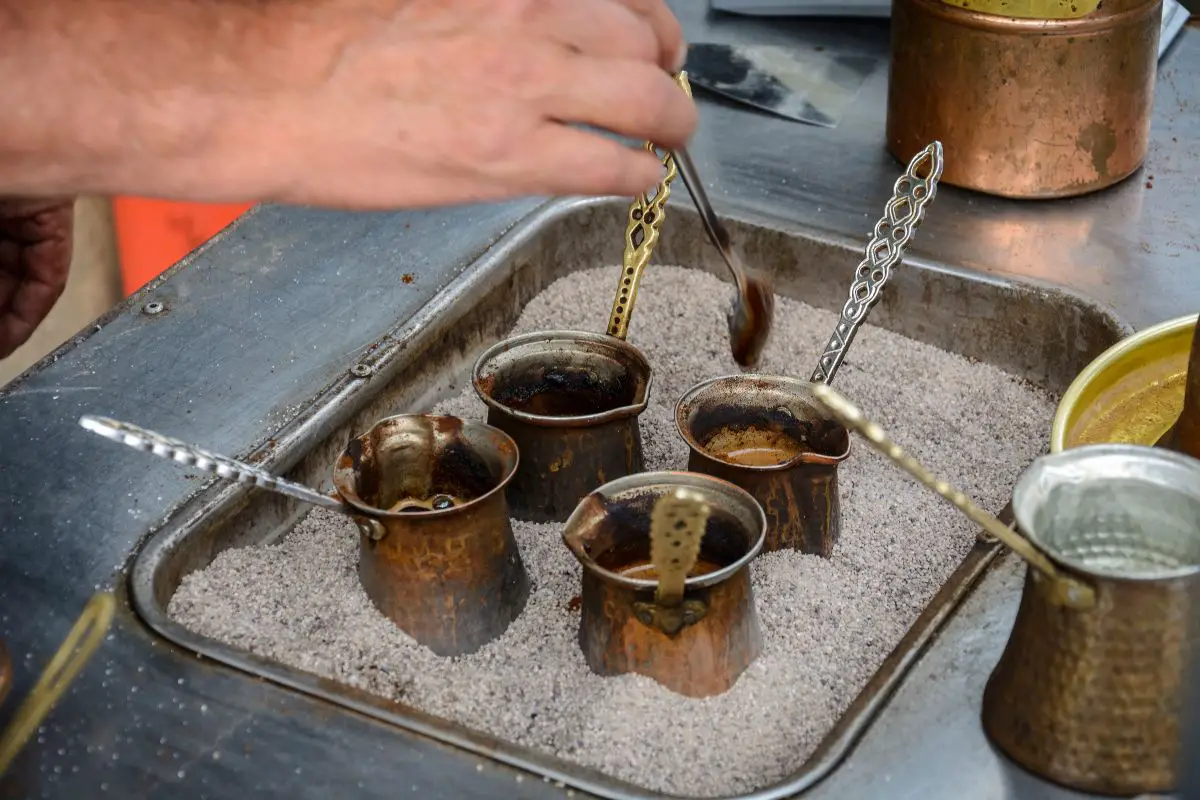Sand coffee, popularly known as Turkish sand coffee, is a unique coffee brewing method. It is comparable to the art of cooking. Sand coffee is stronger and thicker than coffee prepared with other brewing methods. The reason is that it is prepared using fine coffee grounds, which are not filtered when serving. Thus, you drink the brew together with the grounds. But how does sand coffee work? Read on for detailed answers.

The Origin of Sand Coffee
Turkish sand coffee dates back to the 16th Century. It was introduced by two Syrian traders in Istanbul. The first coffee houses in Turkey were opened in Istanbul in 1554. These coffee houses became meeting places for people as they drank sand coffee. Coffee houses were seen as ideal places for holding social gatherings and business meetings. People would also meet in the coffee houses to play games such as backgammon and chess while drinking sand coffee.
However, it took quite some time for the locals to accept coffee. They considered coffee as a drug based on their interpretation of the Quran. As a result, the then Sultan prohibited coffee. Despite the prohibition, the popularity of coffee grew tremendously. As a result, the Sultan had no choice but to lift the ban.
When the Sultan recognized coffee, it earned respect in the Ottoman Court. Coffee brewing became a major trade such that coffee houses would serve sand coffee alongside other beverages. Turks with advanced coffee-brewing skills would be hired as specialty coffee makers by high-ranking individuals to make delicious sand coffee for their guests.
The Turks also adopted coffee into their custom. It played a major role in marriage ceremonies such that men would judge their potential wives based on their coffee-making skills. As a result, women would undergo training on how to brew perfect sand coffee.
How is Sand Coffee Made?
Traditionally, sand coffee is prepared by filling a pan with sand and heating the pan on an open flame. The sand controls the heat, whereby the pot standing in the sand remains warm throughout the brewing process. The brewing temperature is controlled by adjusting the depth of the brewing pot in the sand.
When making sand coffee, water and fine grounds are added into a wide-bottomed pot known as a cezve. The mixture is placed inside the hot sand. Essentially, the sand allows for even heating, and the brew foams within a short period. Once foamed, the pot is removed from the sand and added back three to four times. The ready brew is served in small cups. The fine grounds settle at the bottom of the cups, thereby giving you a strong, thick brew.
The cups used in serving sand coffee are known as demitasse cups. They are small like espresso cups. Sand coffee is often enjoyed alongside a dessert. Although preparing and serving sand coffee is comparable to a special ceremony, it is something you can prepare at home.
Is Sand Coffee Better than Regular Coffee?
Sand coffee offers more freshness and a richer aroma than regular coffee. The stronger aroma results from leaving coffee grounds in the brew when serving. Making Turkish sand coffee does not require a paper filter, which gives it a fresher taste.
Also, the freshness is a result of using freshly ground coffee beans, unlike regular coffee which is often made with pre-ground coffee. You can only match its freshness by grinding your own beans when brewing regular coffee.
However, individuals who do not like strong coffee would find sand coffee too bitter for them. Some sand coffee brewers often add spices to cream and sweeten it.
Summary
Sand coffee is one of the oldest coffee brewing techniques. So how does sand coffee work? It works by placing a special coffee brewing pot in the sand. The sand is contained in a pan placed over an open flame. It is served without filtering or sieving the grounds. Thus, sand coffee is very strong and aromatic. Although it is not the best coffee brewing technique for early mornings, you can enjoy brewing it during your free time for an authentic cup of coffee.